Prospects for the use of anti-aircraft missiles 5V28 from the S-200VM air defense system for striking ground targets
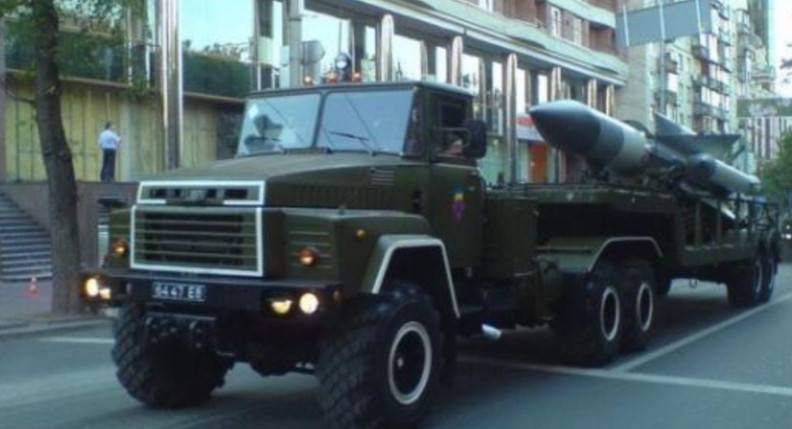
On Military Review on July 13, an article by Roman Skomorokhov was published A riddle that fell like a stake into the ground, in which he discusses the possibility of using Ukrainian S-200 air defense systems for shelling ground targets.
I do not know the military specialty of the author of this publication, but, apparently, he has a superficial and sometimes distorted idea about the Soviet long-range air defense system S-200 in particular and the country's air defense system in general. In an article on the possible use of Ukrainian long-range anti-aircraft missiles taken off combat duty, Roman for some reason cites irrelevant information and, on the contrary, misses important technical details and organizational nuances.
Also, from the readers' comments left to Roman's article, it follows that not all of them understand what the S-200VM air defense system was and what capabilities it had.
The current state of Ukrainian air defense systems S-200
After the collapse of the Soviet Union, a powerful grouping of air defense forces remained in Ukraine, the like of which was not in any of the union republics. Only Russia possessed a large arsenal of anti-aircraft weapons. In 1992, the airspace of the Ukrainian SSR was defended by two corps (49th and 60th) of the 8th separate air defense army. In addition, the 28th Air Defense Corps of the 2nd Separate Air Defense Army was located on the territory of Ukraine.
The structure and armament of the anti-aircraft missile forces stationed in Ukraine were similar to those adopted in the USSR air defense forces. In 1991, on the territory of Ukraine there was equipment and weapons of 18 anti-aircraft missile regiments and anti-aircraft missile brigades, in which there were more than 100 anti-aircraft missile divisions armed with air defense systems: S-75M3, S-125M / M1, S-200VM and S- 300PT/PS.
As of 2010, about three dozen medium-range and long-range anti-aircraft systems and complexes were in working condition in Ukraine: S-300PT/PS and S-200VM.
In 2013, Ukraine had several divisions armed with long-range S-200VMs. Maintaining the S-200VM air defense system with liquid-propellant rockets, which used toxic fuel and an aggressive flammable oxidizer, was possible thanks to the heroic efforts of the calculations and the refurbishment.
Already 10 years ago, the combat value of these single-channel air defense systems was low, and the operating costs were very significant. In fairness, it is worth recognizing that the S-200VM was the most long-range Ukrainian air defense system. But this was depreciated by the poor technical condition of the hardware of the complexes and anti-aircraft missiles, which was caused by a high degree of wear, as well as low noise immunity and single-channel targeting.
Somewhere in 2008, Ukroboronprom announced a program for the restoration and modernization of the S-200VM air defense system, but after analyzing the options, this was recognized as irrational and resources were directed to maintaining the multi-channel S-300PT / PS air defense systems with solid-fuel missiles.
In 2014, the decommissioning of the Ukrainian S-200VMs began, and in 2016, the last division of the 540th Lviv Anti-Aircraft Missile Regiment was formally decommissioned.
There is reason to believe that some of the equipment and missiles removed from combat duty S-200VM were sent for storage, and now they can be converted for shelling ground targets. However, this makes little sense, and why - we will consider below.
What missiles from the S-200VM air defense system can be at the disposal of the Armed Forces of Ukraine?
In his article, Roman writes:
In fact, as part of the S-200 family of air defense systems, various missiles were used modifications: 5B21 (V-860) - for the S-200A air defense system, 5V21P (V-860P) - for S-200V air defense systems, and 5B28 (V-880) - for the upgraded S-200VM air defense system. Theoretically, the upgraded "Vega" can fire old missiles with a shorter range, but this opportunity was used only for the "disposal" of missiles at training grounds (during training and control launches), which had no further prospects for operation in combat divisions.
The anti-aircraft missile of the 5V21 modification, which was used as part of the S-200A air defense system, put into service in the late 1960s, like other missiles used in the later versions of the S-200, was equipped with a semi-active radar homing head. But it is not clear what relation to possible strikes on the territory of Russia have the 5V21 missiles repeatedly mentioned by Roman, which have long been disposed of and shot at firing ranges, and were considered obsolete already in the early 1980s?
As part of the S-200VM air defense systems, which Ukraine inherited from the USSR, 5V28 (V-880) modification missiles were used with a firing range of up to 240 km, and in Roman's article, where he cites photographs of supposedly 5V21 missiles, they are captured.
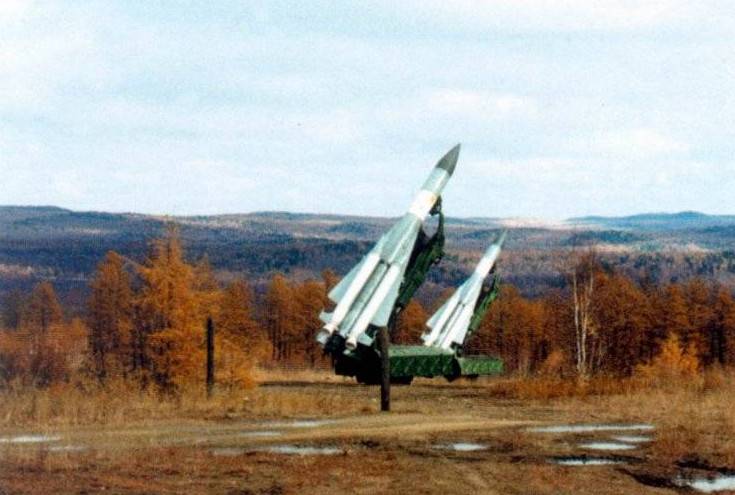
Allegedly, ZUR 5V21 at the starting position. Actually 5V28 missiles
Well, and for some reason, a photograph of the launch of the V-880E export missile from the Iranian S-200VE air defense system.
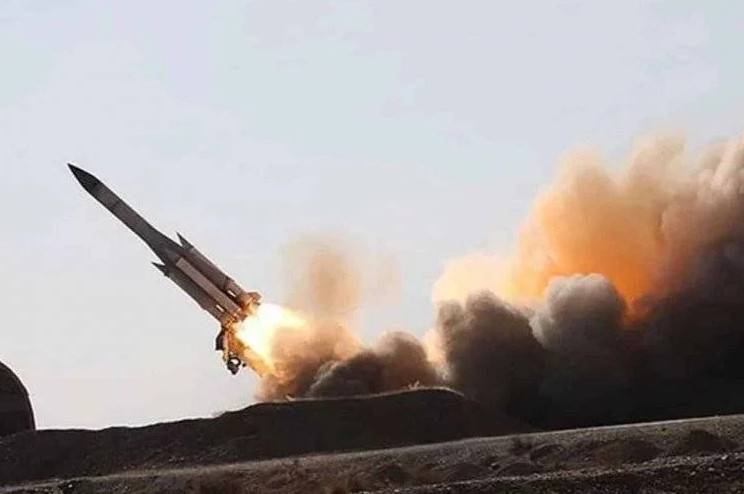
Launch of the Iranian V-880E missile
In Iran, the missiles delivered in 1992 were significantly modernized during the overhaul, and they are even more different from the 5V21 missiles than the standard 5V28 in terms of internal filling.
Quote, Roman Skomorokhov:
Such deliveries are extremely unlikely, and here's why. Bulgaria, which received two S-1980VE air defense systems (channels), 200 TP and 1 V-26E missiles in the mid-880s, decommissioned them more than 20 years ago due to high operating costs and now they are inoperable. Poland had two S-200VE air defense systems (channels), 1 TP and 38 V-880E missiles, and even in 2002 upgraded one complex to the S-200С Wega level, but in 2014 it was removed from combat duty. Even if V-880E missiles suitable for recovery have been preserved in Poland and Bulgaria, their delivery to Ukraine and resuscitation will be fraught with great difficulties, in the absence of real combat prospects.
Radar facilities S-200VM SAM
Considering the possibility of using Ukrainian S-200VM air defense systems on the ground, Roman mentions radar equipment, allowing a number of significant inaccuracies:
The obsolete P-14 and P-35 radars, produced in the 1960s, have long been decommissioned. The mentioned 5N87 / 5N87M radar systems (and not radars) include standby stations, as well as radio altimeters, and are mainly designed to control medium and high altitudes. The P-15M mobile low-altitude radars based on the ZiL-157, which were used mostly in military air defense, have long been decommissioned, and it is not at all clear what relation they have to the S-200.
If we are talking specifically about the Ukrainian S-200VM air defense systems, then to review the air situation and accurately measure the coordinates in the radio engineering units attached to the anti-aircraft missile regiments, there were standby radars 5N84A, P-37, 35D6, as well as radio altimeters PRV-13 and PRV -17.
The two-coordinate radar 5N84A "Defense-14", operating in the meter frequency range (the photo of which is available in Roman's article), confidently detects a fighter flying at an altitude of 10 km at a distance of more than 300 km. The information is updated every 10 or 20 seconds.
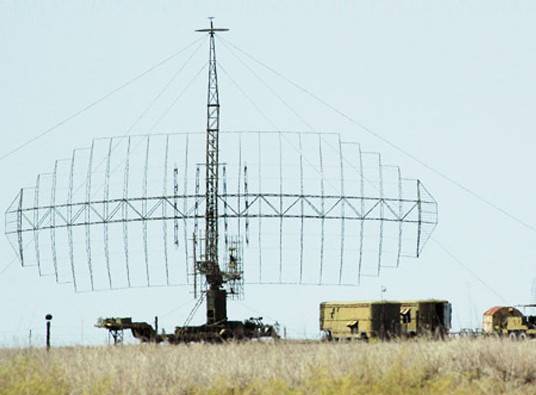
Radar 5N84A
The Ukrainian version 5N84AMA, adopted in 2011, has the same characteristics. During the modernization, a transition was made to a modular design and a new element base, which made it possible to increase the reliability of the station and reduce energy consumption. The number of operating frequencies and noise immunity have increased. Currently, all Ukrainian Oborona-14 radars have been disabled or destroyed.
Prior to the start of the “special operation”, Ukrainian RTV also had a P-37 standby radar operating in the 2830-3010 MHz frequency range and an instrumental range of up to 350 km.
Roman did not remember the 35D6 three-coordinate radar station operating in the decimeter frequency range. This radar is one of the best late Soviet radars and is capable of detecting targets flying at low altitudes. Detection range - up to 360 km.
On the 35D6 radar, the antenna post with a rotary device and the control cabin were mounted on a single semi-trailer.
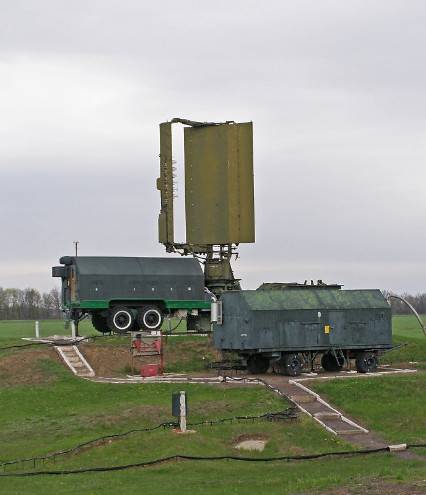
Radar 35D6
The 35D6 radar has good noise immunity, after refinement it can be used as part of modern automated systems and, if necessary, work in the mode of an autonomous control point.
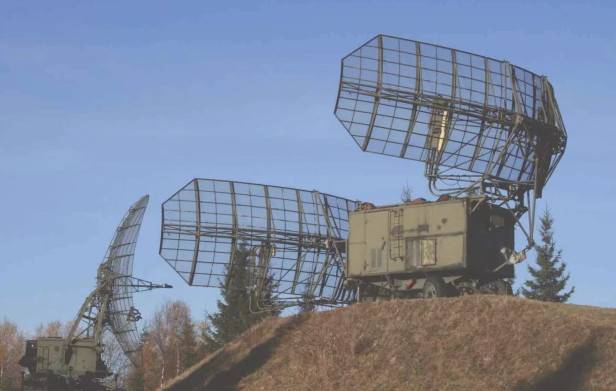
P-37 radar and PRV-13 radio altimeter
Mentioning the obsolete and retired P-14 and P-35 radars, Roman forgot about the PRV-13 and PRV-17 radio altimeters, which are paired with the 5N84A and P-37 two-coordinate radars.
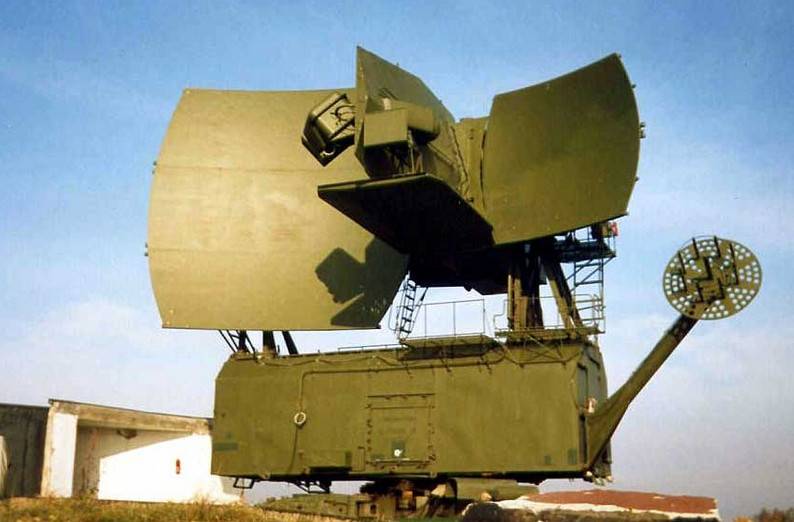
S-200VM target illumination radar
It is with the help of radio altimeters that the exact determination of coordinates is carried out, which is necessary for issuing automated target designation to operators of the 5N62V target illumination radar (antenna post K-1V).
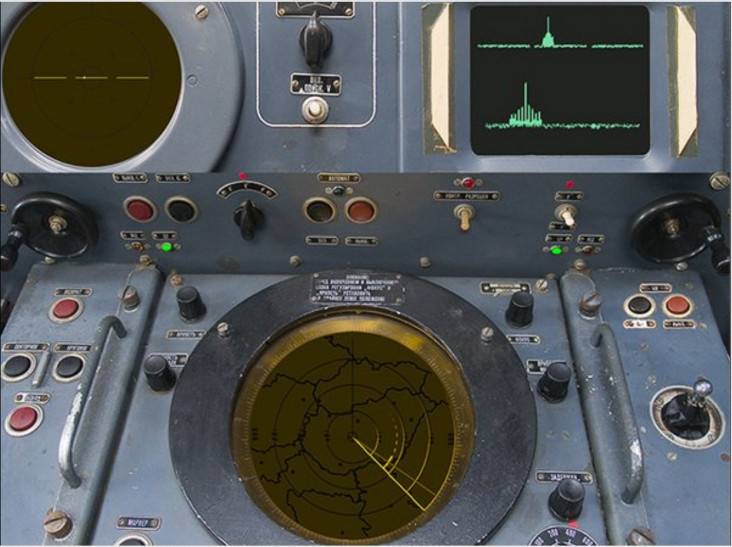
Workplace of the ROC operator
However, as with other Soviet object air defense systems, the operators of the ROC of the modernized Vega had the opportunity to independently search for a target in the “wide beam” mode. But this required more time than with the preliminary receipt of accurate target designation.
Some features of the combat use of the S-200 air defense system
Regarding combat use, Roman writes:
It’s not that it’s not easy, but impossible, to ensure the defeat of missiles from the S-200 air defense system on a ground target. At the design stage of the S-200A, the possibility of shelling large radio-contrast targets such as "railway bridge" or "cruiser" was considered.
The curvature of the earth's surface at a distance of more than 70 km does not allow reliable radar illumination of even a large ground target, and at a short distance, numerous reflections from terrain folds and artificial structures make stable guidance extremely problematic. Moreover, even when firing at air targets, it is difficult to reliably hit objects at a height of less than 300 m. In connection with all this, the "ground" mode for the S-200 air defense system does not exist, and, accordingly, firing in the normal mode at ground and surface targets with 5V21, 5V21P and 5V28 missiles is not provided.
In the event that the semi-active radar homing head for some reason stops seeing the target, within 7-10 seconds the “maximum up” command is issued to the missile’s rudders. The missile goes into the upper layers of the atmosphere so as not to hit ground targets, and there the warhead is detonated.
Separately, it is worth mentioning the possibility of striking the ground with an air defense system with a radio command guidance system. A number of sources say that the S-75 air defense systems of later modifications could strike on the ground with missiles with a “special” warhead. The SNR-125 low-altitude S-125M / M1A systems also had a “ground” mode, which made it possible to fire missiles with fragmentation and “special” warheads at radio-contrast ground and sea targets.
The same fully applies to the Soviet-made S-300PT/PS air defense systems, which use 5V55R/RM missiles with radio command guidance of the second kind (with sight through the missile). Prior to the start of the “special military operation”, training firing of the Russian S-300PS air defense systems was repeatedly carried out during the exercises, with strikes against ground targets with coordinates known in advance. In this case, the firing range does not exceed 50 km. The development of such tasks was previously repeatedly written in the official media, for example here.
Possibility and prospects for the use of 5V28 missiles against ground targets
Quote, Roman Skomorokhov:
Not on paper, not in theory. The missile of the S-200 complex is capable of flying over 500 km, and such cases are known. In the late 1980s, during training and control firing in Kazakhstan, after the failure of the guidance system, the missile did not self-destruct and, having flown out of the range, fell onto a collective farm field. During the fall, the rocket did not explode, was subsequently dismantled on the spot and taken to the landfill for disposal.
Of course, it is not difficult to equip the 5V28 SAM or any other missile of this family with a contact fuse that initiates the warhead when it hits the ground. Another question is where will an unguided rocket with tightly locked rudders fly and where can it hit?
In February 1991, during Operation Desert Storm, the Iraqis tried to launch B-755 anti-aircraft missiles from the S-75M Volga air defense system towards the troops of the multinational forces. All missiles fell in the desert without harming the enemy. With full confidence it can be argued that the result of the use of unguided 5V28 missiles will not be better, and unguided missiles launched into the "white light like a pretty penny" will pose a danger only to the civilian population.
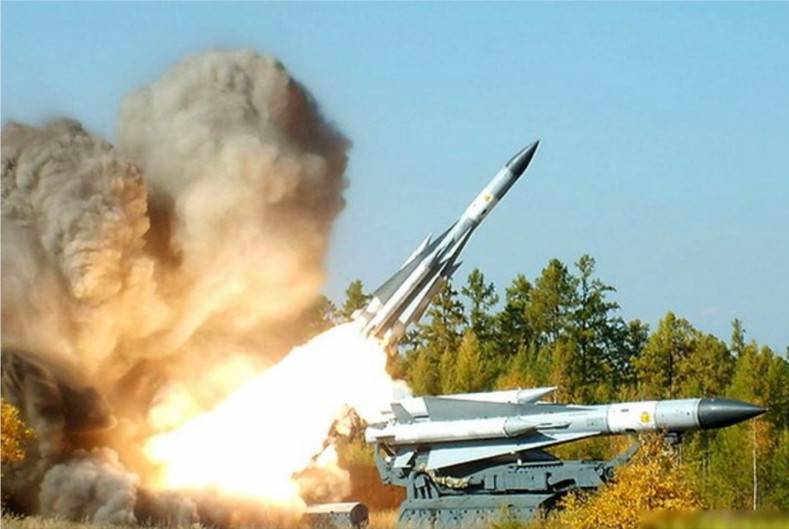
In order to make it possible to deliver accurate strikes on specific targets, first of all, it is necessary to make changes to the control equipment, abandoning the semi-active radar seeker. Relatively easily, an anti-aircraft missile can be turned into an operational-tactical one by combining onboard control equipment with a GPS navigator, which is already actively used on drones-kamikaze. Also, in order to control the firing range, it is necessary to introduce a fuel cut-off mechanism, which is not on an anti-aircraft missile.
However, this is not the biggest problem that arises when converting missiles into OTR. Those who are at least a little familiar with the S-200 family of air defense systems know how cumbersome and complex the complex is. In fact, the “dvuhsotka” is a “semi-stationary” air defense system and is deployed in well-equipped engineering positions. Relocation of the S-200 is possible, but it takes a lot of time and is very laborious.
The rocket is launched from a massive 5P72V launcher, which also undergoes pre-launch preparation. After launch, the next missile is supplied from one of the two 5Yu24 loading machines.
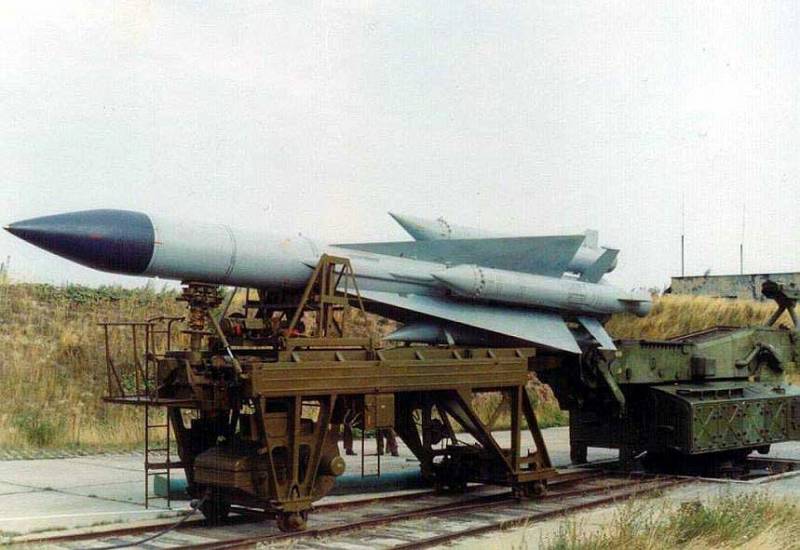
Loading the launcher 5P72V SAM 5V28 using the charging machine 5Yu24
The 5Yu24 loading machine was a rail-mounted frame with front and rear supports for the rocket, mechanisms and drives for moving the ZM along the rails, mechanisms for coupling with the 5P72V launcher and rocket reloading, providing an automatic loading cycle, including the approach to the launcher and return to its original position.
Due to the fact that all previously existing S-200VM launch sites in Ukraine have been eliminated, and the 5P72V launchers themselves and their loading vehicles have extremely low mobility, it will be very difficult to launch missiles in the frontline using standard S-200VM air defense systems. .
It seems logical to create a towed or self-propelled launcher mounted on a heavy-duty wheeled or tracked chassis, but even in this case, many technical difficulties will have to be overcome.
In the early 2000s, in Libya, with the participation of foreign specialists, an attempt was made to improve the mobility of the S-200VE air defense system by placing the main elements of the complex on a wheelbase.
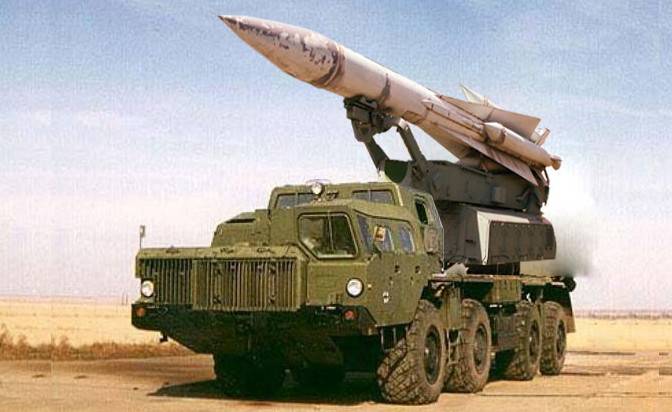
To do this, the 5P72V launcher was installed on a heavy-duty off-road chassis MAZ-543, placing a rocket between the cabins, according to the OTP R-17 type. The guidance radar was also mounted on the MAZ-543. Means of technical and material support were placed on the basis of KrAZ-255B road trains.
However, nothing good came of it. When launching a rocket launching at an angle of 48 °, the MAZ-543 was affected by jet exhausts from solid-fuel boosters, which caused the wheel tractor to fail. In addition, due to the high center of gravity, there was a tendency to tip over, and when transporting a fueled rocket, it experienced too much shock loads.
I was very amused by the comment of one reader, a quote:
Fortunately, there is no aircraft in the Ukrainian Air Force under which it would be possible to hang a rocket weighing 7100 kg, almost 11 m long and 0,86 m in diameter. For comparison, the widespread MiG-21F-13 fighter had the same normal takeoff weight . Yes, and the suspension of an anti-aircraft missile under an air carrier is impossible in principle, since the 5V28 SAM is loaded onto the “gun” from above, which is typical for all Soviet first-generation air defense systems.
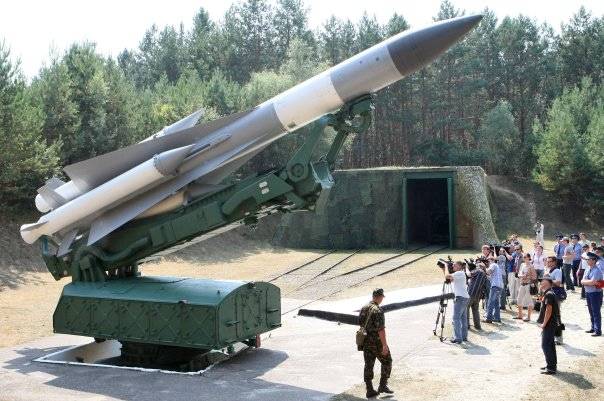
For a better understanding of the dimensions of the rocket - a photo of the 5P72V launcher and the 5V28 SAM installed on it next to people. Also visible are the rails along which the 5Yu24 loading vehicles leave the reinforced concrete shelter.
As for pre-launch preparation, it should be understood that a rocket cannot be in an equipped and refueled state indefinitely, and jet fuel components have a certain shelf life. Expired fuel and oxidizer are prone to loss of their properties and self-decomposition, which is fraught with emergency situations during refueling and can lead to abnormal operation of the LRE. Currently, Ukraine does not have stocks of fresh fuel TG-02 and oxidizer AK-27, and the establishment of their production in conditions where industrial enterprises and energy facilities are being hit by cruise missiles and drones, unreal.
Preparation for the launch of long-stored liquid anti-aircraft missiles, produced about 40 years ago and requiring refueling with hellish components, consisting of a very aggressive flammable and explosive oxidizer and a very toxic fuel, is a very extraordinary task. This requires special equipment of a technical position, and the refueling procedure itself is carried out in chemical protection suits and in insulating gas masks. Neglect of skin and respiratory protection means and violation of refueling technology inevitably leads to serious consequences.
At the same time, the question of whether it is possible to use anti-aircraft missiles of the S-200VM complex for shelling ground targets should be answered in the affirmative. But the conversion of 5V28 missiles into OTR will require very significant material resources and will be very laborious, which will negatively affect the cost-effectiveness criterion, with vague prospects for combat use. I'm far from underestimating weapon opponent, just as I am not a supporter of the thesis “too late, little, useless”. It is possible that Ukrainian specialists, among whom there are many who are highly qualified, will try to make operational-tactical anti-aircraft missiles, but the combat effectiveness of such home-made products, taking into account all the circumstances, is very doubtful.
In my opinion, a much greater danger to stationary objects in the depths of Russian territory is posed not by converted anti-aircraft missiles, but by heavy Soviet-made UAVs Tu-141 and Tu-143 or unmanned training L-39 Albatros equipped with a combat charge, as well as newly created Ukrainian and existing Western long-range drones.

Judging by the available photograph, taken moments before the fall of an unidentified object in the Bryansk region, it looks more like a Tu-141 long-range reconnaissance drone than a 5V28 anti-aircraft missile.
Information